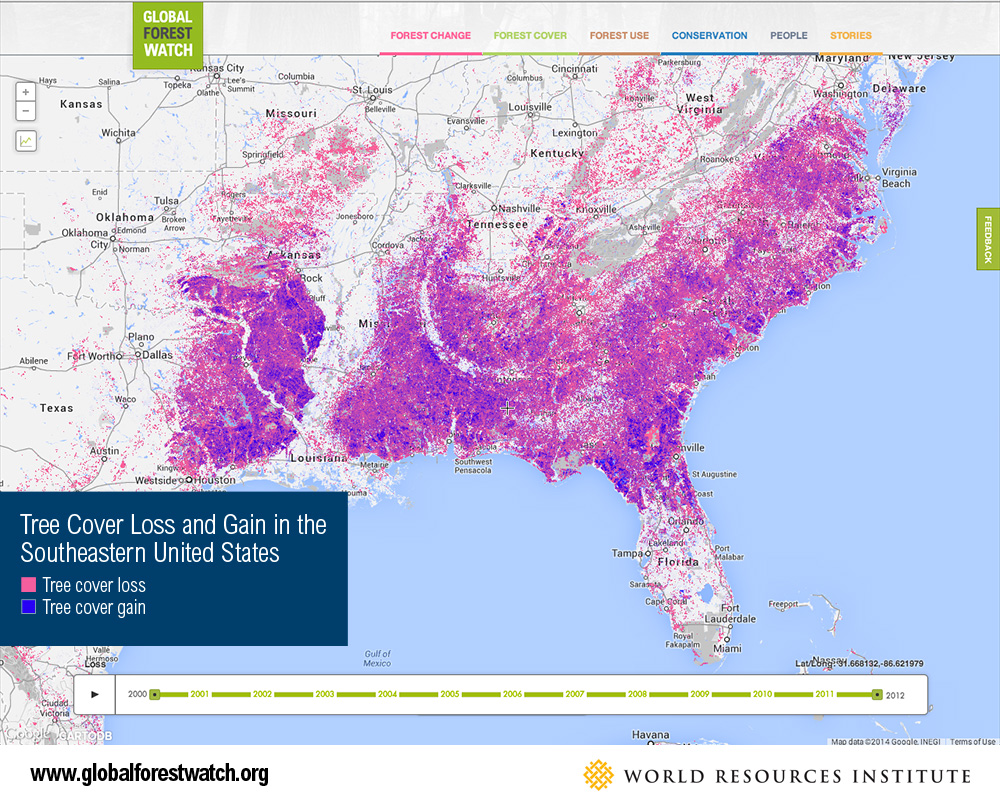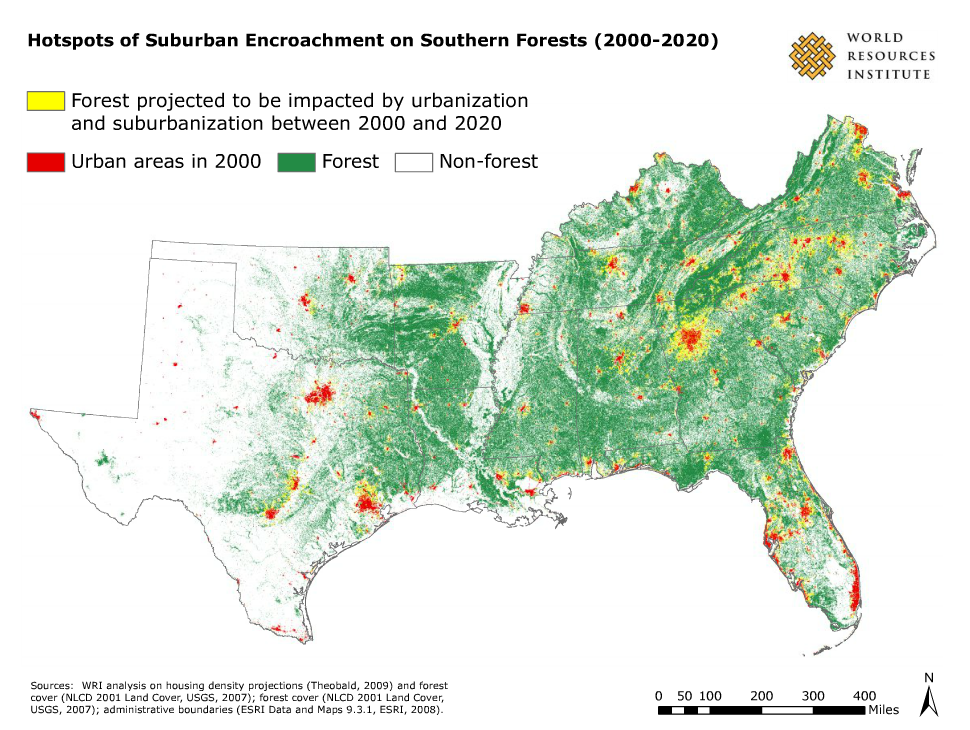Does Population Growth Mean Forest Loss?
Forests are vital to the environmental and economic health of North Carolina. Sixty percent of North Carolina’s land area is forested, representing a total of 18.6 million forest acres. Our state’s four national forests—Croatan, Uwaharrie, Nantahala, and Pisgah—offer visitors and residents alike the opportunity to see an array of wildlife and pursue a variety of outdoor activities.
In addition to recreational activities, forests improve overall quality of life through clean air and water and are an economic engine of the state’s economy. According to NC State University’s Wood Products Extension group, there are nearly 2,300 forest products manufacturing establishments in North Carolina. Combined, they employ more than 67,000 workers with an annual payroll of $2.7 billion.
Tree Cover Loss and Gain in the Southeastern United States, 2000-2012, World Resources Institute
The importance of forests to North Carolina and other Southern states is highlighted in a new online forest monitoring system—Global Forest Watch—created by the World Resources Institute (WRI), Google, and dozens of partners. In “9 Maps that Explain the World’s Forests,” Crystal Davis and Dave Thau highlight Southern U.S. forests for experiencing some of the highest rates of forest loss and forest regrowth in the world:
The Southern United States is home to the nation’s most heavily forested region, making up 29 percent of total U.S. forest land. The fine mosaic of tree cover loss (pink) and gain (blue) in the above map shows how forests throughout this region are used as crops, grown and harvested in five-year cycles to produce timber or wood pulp for paper production. In fact, between 2000 and 2012, nearly one-third of the tree cover in this region was either lost or regrown.
This practice of “intensive forestry” or “production forests” is used all over the world to provide valuable commodities and bolster regional and national economies. WRI analysis suggests that if managers of production forests embrace a “multiple ecosystem services strategy,” they will be able to generate additional benefits such as biodiversity, carbon storage, and water filtration.
While Global Forest Watch provides a great platform to explore forests worldwide, WRI’s project on “Southern Forests for the Future,” completed in 2010, provides an in-depth look at forests of the southern United States. They examine the history of Southern forests, their benefits to individuals and states, and past and future changes and challenges. Their map of projected hotspots of suburban encroachment on Southern forests from 2000 to 2020 (below) caught my eye:
The hotspots of potential suburban encroachment in North Carolina are clustered around I-40 and I-77 in Charlotte, the Triad, and the Triangle. These patterns are in line with the Carolina Demography housing unit projections and the potential emergence of a ‘megalopolis’ in decades to come.
Just as population and housing units are responsive to a number of factors, the future of Southern forests will be shaped not only by population growth and corresponding residential construction and transportation, but by other factors, as well, such as commercial land use (especially agriculture) and forest management practices.
Your support is critical to our mission of measuring, understanding, and predicting population change and its impact. Donate to Carolina Demography today.